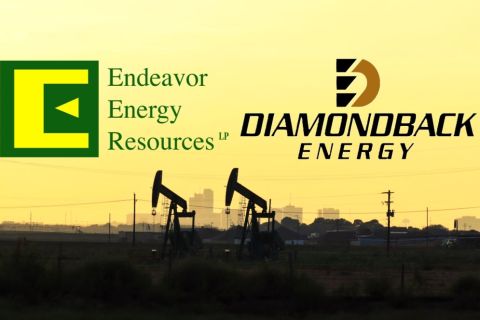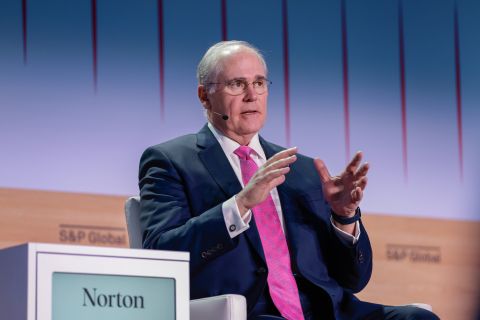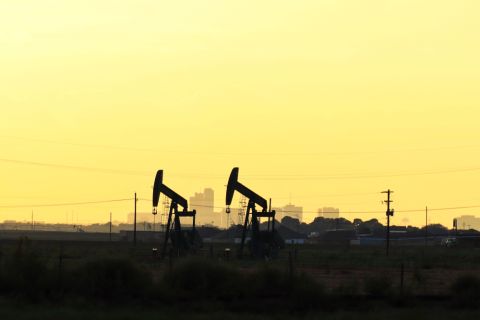Commodity prices continue to be on a tremendously volatile run. After soaring to last year’s high peak of $147 a barrel in July, oil plummeted to close at $56 on Nov. 12.
A similar trend has occurred for natural gas prices. In the U.S., the drop is driven by oversupply, and elsewhere as a result of the global economic slowdown.
“Crude oil demand is decreasing in all developed countries,” says David Lundberg, U.S. senior director at Standard & Poor’s. “In the U.S. for example, gasoline demand is now down about 5% year-on-year, and inventories have grown”
In regions where the recession began earlier, such as California, demand destruction has been even more severe. S&P still expects that emerging market growth will result in roughly flat year-on-year overall global crude demand, but that compares to low, single-digit overall growth in recent years.
“Overall, S&P views the E&P sector to be stable to somewhat negative,” says Lundberg. “While money poured into commodities in the early part of last year, there has been a clear reversal in recent months as investors have fled anything risky and have funneled cash into more conservative asset classes.”
In the case of natural gas, there have been real worries about the supply growing too quickly, as “the industry has been a victim of its own success” to a degree, by developing the technologies to unlock many of the unconventional resource plays, such as shale gas.
As a result, U.S. gas supply could grow up to 5% to 7%, potentially resulting in a glut of gas, particularly if the U.S. experiences an extended warm winter.
With this macro backdrop, S&P continues to maintain flat long-term price assumption, at $60 per barrel and $6 per million Btu, levels reflecting a conservative view of supply and demand fundamentals.
“Last month, however, we did lower our short-term assumptions, which now stand at $70 per barrel and $7 per million Btu,” says Lundberg. “It is certainly noteworthy that these assumptions are above where actual prices are today, and this is relatively rare. I would emphasize that we have some tolerance for prices dipping below our assumptions, but we do revisit them every quarter. If we believe that prices are likely to stay meaningfully lower in early 2009, we would likely lower them again.”
Meanwhile, the capital markets are “effectively closed for high-yield issuers” and it will be much more difficult for companies to execute on asset sales. Commercial banks are expected to soon lower their price decks, which will result in decreases in borrowing bases, which could, in turn, pressure companies with significant outstanding bank debt. Decreases could be in the 15% to 20% range.
“We also expect declining profit margins and stark basis differentials—not only in the Rocky Mountains but also in the Midcontinent,” he says.
On the upside, many companies are hedged, particularly so in high yield, so the pain of lower prices will likely be somewhat delayed. Also, and perhaps more importantly, many companies are taking appropriate actions to preserve liquidity. A significant portion of E&P companies’ capex “tends to be discretionary in nature and can usually be scaled back if management teams are willing to sacrifice production growth,” he says.
“In third quarter calls, we’ve heard the theme ‘living within cash flow’ again and again.”
Recommended Reading
Analysts: Diamondback-Endeavor Deal Creates New Permian Super Independent
2024-02-12 - The tie-up between Diamondback Energy and Endeavor Energy—two of the Permian’s top oil producers—is expected to create a new “super-independent” E&P with a market value north of $50 billion.
ConocoPhillips CEO Ryan Lance: Upstream M&A Wave ‘Not Done’ Yet
2024-03-19 - Dealmaking in the upstream oil and gas industry totaled $234 billion in 2023. The trend shows no signs of slowing, ConocoPhillips CEO Ryan Lance said at the CERAWeek by S&P Global conference.
ONEOK CEO: ‘Huge Competitive Advantage’ to Upping Permian NGL Capacity
2024-03-27 - ONEOK is getting deeper into refined products and adding new crude pipelines through an $18.8 billion acquisition of Magellan Midstream. But the Tulsa company aims to capitalize on NGL output growth with expansion projects in the Permian and Rockies.
EIA: E&P Dealmaking Activity Soars to $234 Billion in ‘23
2024-03-19 - Oil and gas E&Ps spent a collective $234 billion on corporate M&A and asset acquisitions in 2023, the most in more than a decade, the U.S. Energy Information Administration reported.
Dallas Fed Energy Survey: Permian Basin Breakeven Costs Moving Up
2024-03-28 - Breakeven costs in America’s hottest oil play continue to rise, but crude producers are still making money, according to the first-quarter Dallas Fed Energy Survey. The situation is more dire for natural gas producers.





